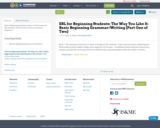
Book 1. Beginning grammar book in a 5-level series for ESL students. This is the first of the two books for beginners.
- Subject:
- English Language Arts
- Material Type:
- Homework/Assignment
- Textbook
- Date Added:
- 05/26/2016

Book 1. Beginning grammar book in a 5-level series for ESL students. This is the first of the two books for beginners.
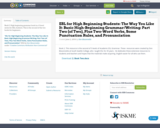
Book 2. High beginning grammar book in a 5-level series for ESL students. This is the second of the two books for beginners.
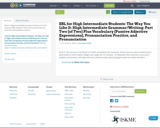
Book 4. High intermediate grammar book in a 5-level series for ESL students. This is the second of the two books for intermediate students.
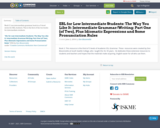
Book 3. Low intermediate grammar book in a 5-level series for ESL students. This is the first of the two books for intermediate students.
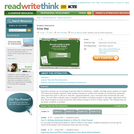
The Essay Map is an interactive graphic organizer that enables students to organize and outline their ideas for an informational, definitional, or descriptive essay.
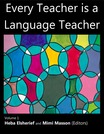
This book disseminates practices shared at the annual event Every Teacher is a Language Teacher held at the Faculty of Education (University of Ottawa) for all first-year Bachelor of Education teacher candidates. This resource responds directly to calls from attendees for a resource that synthesizes the content shared at each workshop, enabling them to access and implement the rich pedagogical knowledge shared. The book is meant to serve as a textbook for Teacher Education courses, graduate courses, as well as an ongoing promotion of research-based practices created by Faculty of Education partners (faculty and graduate students alike) that should be shared more widely with Canadian language educators, teachers and consultants, particularly in its bilingual format. This publication is unique and particularly useful to both pre- and in-service teachers, as it offers modes of practice based on both research and theory. This means it is neither exclusively a lesson plan nor a theoretical analysis; but rather a synthesis that aims to show how the two domains inform one another. We see it as being immediately valuable for teacher and teacher educators, while also filling a gap in the field of language education more widely -- one that embodies anti-racist, ethical paradigms within current interdisciplinary practice in its responsiveness to challenges of modern technology and globalization.
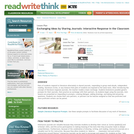
Pairs of students respond to literature alternately in shared journals. Mini-lessons are presented on responding to prompts, creating dialogue, adding drawings, and asking and answering questions.
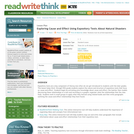
Students explore the nature and structure of expository texts that focusing on cause and effect and apply what they learned using graphic organizers and writing paragraphs to outline cause-and-effect relationships.
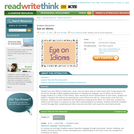
The activity includes a series of exercises, in which students view the literal representations of idioms and then examine the metaphorical meanings of the idioms.
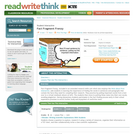
Fact Fragment Frenzy provides elementary students with an online model for finding facts in nonfiction text, then invites students to find facts in five sample passages.
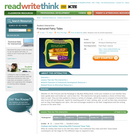
The Fractured Fairy Tale tool encourages students to create their own fractured fairy tales.

Join Veronica Gallardo, Director Migrant and Bilingual Education, OSPI and ESD 105 as they provide guidance on understanding systems level approach for designing Language Learner services.
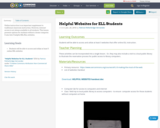
Online instruction is an important supplement to traditional classroom instruction. However, internet access is not always available to all students. This lesson presents options for students without a home computer. It also lists 5 helpful ESL/ELL websites.
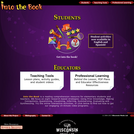
The "Into the Book" web site is designed to help elementary students practice eight reading comprehension strategies through playful interactive activities. The site focuses on eight research-based strategies: Using Prior Knowledge, Making Connections, Questioning, Visualizing, Inferring, Summarizing, Evaluating and Synthesizing. "Behind the Lesson," the teacher area of the site, provides information, lesson plans and other resources for teachers.
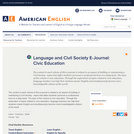
The volume is designed specifically for language teachers who are turning toward content-based instruction to promote content learning and language learning in their classes. Through the exploration of topics related to civic education, language teachers can help their students master English and simultaneously become more knowledgeable citizens of the world. The combination of improved language skills and increased knowledge can enhance students' studies, work, and ability to become more active and conscientious participants in their communities.

Peace Education offers topics and issues that touch the lives of our students every day such as resolving conflicts, clarifying values, and understanding diversity. The language classroom also offers us the opportunity to help students address these issues through activities and tasks that are related to the content and that require the practice of language skills, social interaction skills, and critical thinking skills
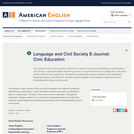
The content is related to an aspect of building or maintaining a Civil Society— topics that affect students' personal or professional lives on a daily basis. Each chapter has four basic parts, including a brief background on and discussion of the topic(s) presented, classroom activities designed for a lower intermediate class (but which can be adapted to a more advanced level), other resources for authentic materials (internet, books, videos, etc.), and references for what has been presented. Paradigms, theories, and techniques have been developed to aid the instructors in their tasks. Techniques such as scaffolding help to make the content more accessible to the student. Theories such as learning strategies and multiple intelligences help instructors to appropriately design their lessons for maximum benefit to each student's own academic culture. Choices of activities such as reading, discussion, and interviews aid the instructor to focus on strengthening the students' basic language skills (listening, speaking, reading, and writing) in an integrated way that will foster communication and promote the students' self-reliance in the target language.

One of the fastest-growing areas of medical research is that of genetic testing and gene therapy. This chapter introduces students to this area of DNA research and helps them explore the related ethical issues. Scientists have recently completed a preliminary ŰĎmapŰ of all the genes in the human body. This is also known as the Human Genome Project and consists of all the sequences of DNA chemical units that tell a cell how to behave. This accomplishment has incredible benefits. However, it also raises new, complex issues that society cannot ignore.

New understanding of human genetics will not only make it easier to diagnose diseases, it will also change how diseases are treated. Scientists and drug companies are using knowledge from the Human Genome Project to find cures for everything from cancer to obesity (see chapter 1: Mapping the Human Genome). This new medicine is called "genomic" medicine. Medicine is changing at a rapid rate as a result of the new knowledge of the human genome. It is important for students to know how drugs and treatments are changing and will continue to change.

Rather than focus on the scientific details of this discovery, this chapter gives an overview of the important concepts related to DNA's initial discovery and later research conducted in this field. Teachers can use the lesson plans and materials to help students understand these fundamental concepts and gain a command of the vocabulary necessary to discuss them. Given the amazing advances in biological research and the new knowledge that has become available to human beings about their own biological makeup, it is important for students to know basic concepts related to DNA research and the human genome project. This following lesson provides a basic introduction to this topic in an interactive fashion.